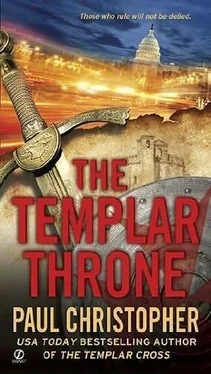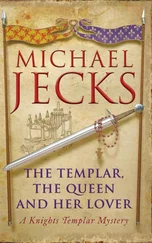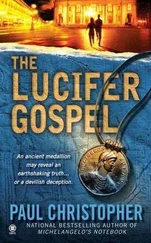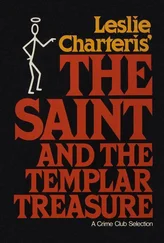Paul Christopher - The Templar throne
Здесь есть возможность читать онлайн «Paul Christopher - The Templar throne» весь текст электронной книги совершенно бесплатно (целиком полную версию без сокращений). В некоторых случаях можно слушать аудио, скачать через торрент в формате fb2 и присутствует краткое содержание. Жанр: Триллер, на английском языке. Описание произведения, (предисловие) а так же отзывы посетителей доступны на портале библиотеки ЛибКат.
- Название:The Templar throne
- Автор:
- Жанр:
- Год:неизвестен
- ISBN:нет данных
- Рейтинг книги:4 / 5. Голосов: 1
-
Избранное:Добавить в избранное
- Отзывы:
-
Ваша оценка:
- 80
- 1
- 2
- 3
- 4
- 5
The Templar throne: краткое содержание, описание и аннотация
Предлагаем к чтению аннотацию, описание, краткое содержание или предисловие (зависит от того, что написал сам автор книги «The Templar throne»). Если вы не нашли необходимую информацию о книге — напишите в комментариях, мы постараемся отыскать её.
The Templar throne — читать онлайн бесплатно полную книгу (весь текст) целиком
Ниже представлен текст книги, разбитый по страницам. Система сохранения места последней прочитанной страницы, позволяет с удобством читать онлайн бесплатно книгу «The Templar throne», без необходимости каждый раз заново искать на чём Вы остановились. Поставьте закладку, и сможете в любой момент перейти на страницу, на которой закончили чтение.
Интервал:
Закладка:
"The Irish aren't too good at that sort of thing," said Holliday. "I went to a conference once at University College in Cork. They were putting up a parking garage near the river, and during the excavations for the foundation they came upon the remains of an entire Viking settlement, perhaps the first settlement in Cork. Instead of calling in a team of archaeologists they simply put down a sheet of heavy plastic and built right on top of it. Pretty crude."
They walked along the bluffs down to Wicklow Head. It was a cruel and bitter place, dark hills and jutting cliffs running down to the sea. In a storm it would be foul and in a fog it would be dangerous, both to ships and to anyone stupid enough to walk along the cliffs.
"Wuthering Heights." Meg smiled, looking out over the sparkling water. "Catherine calling for Heathcliff across the moor."
"Makes you wonder why people live in places like this," said Holliday.
"You could say the same thing about Minnesota in the wintertime. It depends on what you're used to."
"I suppose," grunted Holliday. They turned and walked back to the Dunbur Road and headed back into town. "What do you think of O'Keefe?" he asked finally.
"It was lucky he was there at St. Michael's Mount," answered Meg.
"Luck's hardly the word," said Holliday.
"What's that supposed to mean?"
"Think about it," said Holliday. "You don't organize a raid of SWAT cops like that on the fly. It has to be organized and that takes time. Someone knew we were going to be there."
"Who?" Meg said. "These mythical Vatican spies of yours?"
"Someone who could track us through my credit card," said Holliday. "It's the only way they could have known."
"Who could do that?"
"The only people I can think of is the police in Venice," said Holliday, "but that's a stretch."
"What about that bald man in Prague, or the man you… killed on the boat. The one you said was an assassin?"
"I suppose, but that doesn't make much sense, either."
"What does any of that have to do with Mr. O'Keefe?"
"Don't you think it's a bit of a coincidence that the Mary Deare was anchored fifty feet offshore just when we needed it?"
"It happens," said Meg.
"Only on reruns of Columbo," snorted Holliday. "O'Keefe was waiting for us just as sure as that SWAT team knew we were going to be there. We were meant to get on board. We were meant to escape."
"Maybe you should get help for these paranoid delusions of yours," said Meg skeptically.
"I don't think it's a delusion at all. I think it was meant to take us out of the loop, convince us that we were fugitives on the run. Someone is keeping track of us and what we're up to. Someone who wants us to keep unraveling clues until we find what we're looking for."
"That's just plain old- fashioned nuts," said Meg. "We don't even know what we're looking for."
"Just keep your wits about you when you're talking to O'Keefe; he's not the happy-go-lucky leprechaun he pretends to be," Holliday cautioned. "He's just too good to be true."
The actual town of Wicklow had the look of an old man or woman desperately trying to imitate youth. Every storefront was painted a different bright color but each slate roof was sagging and there wasn't a building on the High Street less than a hundred and fifty years old. Charles Dickens would have felt right at home. For a town of ten thousand it had an extraordinary number of restaurant-bars, seventeen by Holliday's count.
The sidewalks were narrow, the traffic was crushing and everything looked like it needed repairing. There were so many blobs of pressed old bubble gum on the sidewalks it looked like some sort of inlay. If for nothing else Holliday stood out for his size; it seemed that the average Wicklownian male was short and the average woman was both short and tending to fat. A pack of teenagers in magenta and gray forced Holliday and Meg off the sidewalk as they powered onward, three-quarters of them smoking, all of them talking and none of them paying any attention to anyone else.
They stopped at the local Cead Mille Failte-a hundred thousand welcomes-Tourist Office and picked up a brochure.
"It says here the Gaelic name for Wicklow means Church of the Toothless One," said Meg.
"Toothless one," said Holliday, looking at the dreary collection of pastel buildings. "That sounds about right."
"Boxtys are potato pancakes."
"Pardon?"
"What Sean's cooking for dinner," answered Meg.
"I bet his name isn't Sean at all. It's probably John but the girls like Sean better." Holliday shook his head. "Toothless," he muttered.
They reached what passed for a town square in Wicklow, a pocket-handkerchief-sized triangle of grass with a wrought iron two-foot-high fence around it and a statue in the middle. The statue was of a dour- faced bearded man in an old-fashioned ship captain's outfit. He looked constipated, but most Victorian men and women seemed to look that way. According to the brochure he was the captain of the Great Eastern, the ship that laid the first transatlantic cable. Someone had spray-painted Pat Kenny is a git amp; a wanker! in fluorescent pink all over the base of the monument.
There was a miniature department store on the square and they managed to buy some clothes and backpacks to put them in, then continued their walk. They turned down Bridge Street and headed back down the hill to the port. They went into Bridge Books, a cottagelike building with apartments above the store, the whole place painted a horrible shade of robin's egg blue. They asked if there was anything in the store about the island of Iona.
Holliday wasn't expecting anything at all and he was surprised when they actually had two volumes: a history of Iona from its founding in the sixth century to the present, including a detailed map, and a book of prayers from Iona Abbey. Holliday bought the history and Sister Meg bought the prayers.
Having toured Wicklow they went back to the ship and helped O'Keefe with the dinner. They stayed the night in port and headed north the following morning at daybreak.
18
Iona, according to the Reverend James Walker, author of the book The Wild Geese Fly: A History of the Sacred Isle of Iona from Ancient Times to the Present, is an island five miles long and two miles wide lying a mile offshore of the Island of Mull, a much larger but equally windswept and lonely place in the Inner Hebrides of Scotland's western coast.
It is, to the Scots Presbyterian minister, "a thin place," so isolated and distant from the world that it exists in a very narrow space between reality and things spiritual, thus bringing it that much closer to God. Its first occupant after man's Stone Age forebears was a saint from Ireland, St. Columba, an exiled priest-soldier kicked out of the country for leading the losing side during the Battle of Cul Dreimhne in A.D. 561.
Columba arrived on Iona two years later, bringing twelve men with him and establishing a monastery. Each monk was required to build a cairn of stones on the beach equivalent to the sins of his life, and the remains of those cairns can still be seen on the beach, now romantically known as the Bay at the Back of the Ocean.
After St. Columba came the Vikings and after the Vikings a flock of Benedictine nuns, complete with a priest and a prior and then an abbey, built in 1202. The nuns built a nunnery to go along with the monastery, and a village, Baile Mor, which ironically translates as Large Town. No crops grew on the stony, boggy ground, but sheep could be bred on the windblown gorse and stunted grass, and the resulting wool harvested and spun. A poor living was all the island offered, and a poor living was all that was needed.
As the decades and the centuries passed, Iona spread the word of God, first to the craven, pagan English, and then to France and the rest of Europe. By the time Jean de Saint-Clair and the Blessed Juliana arrived at Iona in 1307 on their Venetian ship the Santa Maria Maggiore, the island was already deemed holy and at least fifty-six kings of Scotland and Norway had been buried there, not to mention four Irish kings, one saint, and one former leader of the British Labour Party named John Smith who had enjoyed holidays on Iona several times.
Читать дальшеИнтервал:
Закладка:
Похожие книги на «The Templar throne»
Представляем Вашему вниманию похожие книги на «The Templar throne» списком для выбора. Мы отобрали схожую по названию и смыслу литературу в надежде предоставить читателям больше вариантов отыскать новые, интересные, ещё непрочитанные произведения.
Обсуждение, отзывы о книге «The Templar throne» и просто собственные мнения читателей. Оставьте ваши комментарии, напишите, что Вы думаете о произведении, его смысле или главных героях. Укажите что конкретно понравилось, а что нет, и почему Вы так считаете.











